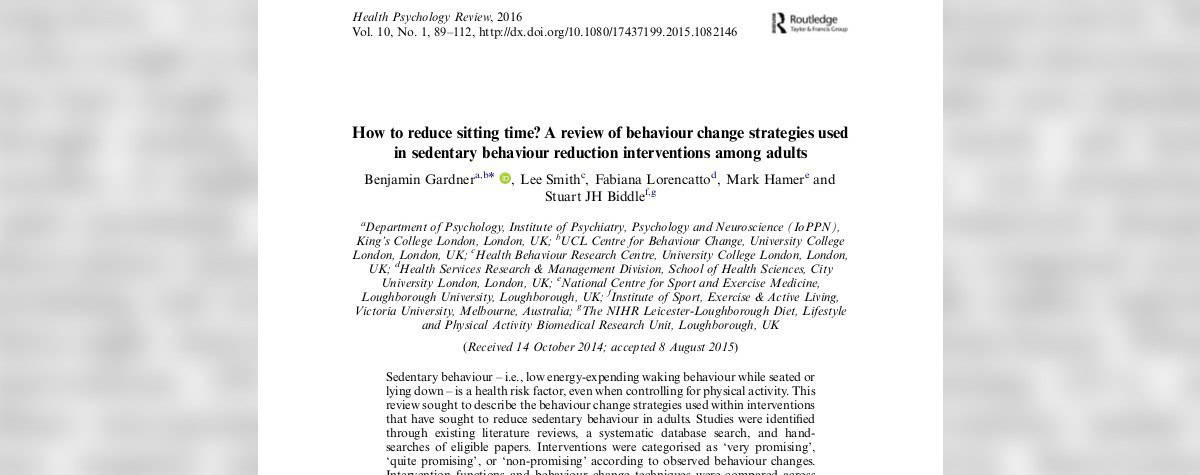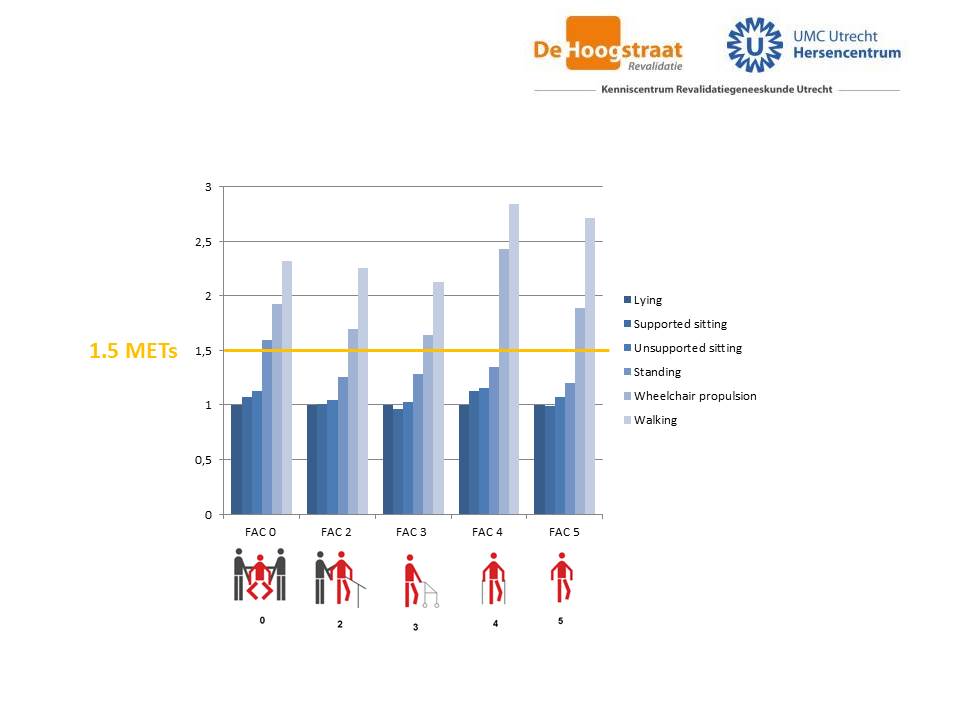
Targeting Physical Activity Doesn’t Reduce Sedentary Time
October 2, 2015
Measurement in Physical Education and Exercise Science Special Issue on Sedentary Behaviour
October 15, 2015Today’s post comes from Dr. Olaf Verschuren, of the Centre of Excellence for Rehabilitation Medicine in Utrecht.
Children with cerebral palsy and adults with stroke are advised to participate in moderate to vigorous physical activity (MVPA), such as brisk walking and running. However, these patient groups develop or return to an inactive lifestyle due to the different physical, cognitive and environmental barriers, and often become deconditioned and predisposed to a sedentary lifestyle that may contribute to an increased risk for their health.
As we all know, prolonged periods of sedentary behavior are associated with several metabolic risk factors and all-cause mortality, independent of participation in physical activity. Therefore, people with stroke and children with cerebral palsy should not only participate in physical activity but also try to reduce or break up sedentary time as this might reduce the high risk of health problems. However, there is a lack of knowledge about sedentary behavior in these patient groups.
The SBRN defined ‘‘sedentary’’ as any waking behaviour characterized by an energy expenditure ≤1.5 metabolic equivalent of task (MET) while in a sitting or reclining posture. Despite sitting being an omnipresent behavior in all people, there are no studies actually assessing the energy expenditure of sitting and standing in people with stroke and children with cerebral palsy. So, in order to be able to support people with stroke and children with cerebral palsy to engage in activities that generate light to moderate intensity energy expenditure (that exceeds the 1.5 METs) and confer some health benefit, it is necessary to know which activities generate the required physiological response. Thus, when operationalizing sedentary behavior against low intensity physical activities such as sitting, standing and walking, we have to rely on the energy expenditure.
Olaf Verschuren (researcher at the Brain Center Rudolf Magnus and Center of Excellence for Rehabilitation Medicine, University Medical Center Utrecht and De Hoogstraat Rehabilitation, in Utrecht, The Netherlands) and colleagues recently published two studies that objectively measured and calculated the energy expended by people with stroke and children with cerebral palsy during near sedentary behaviors.
The main findings:
- Children and adolescents with cerebral palsy across all functional had energy expenditures higher than 1.5 METs during standing. Our findings related to energy expenditure therefore suggest that changing children’s position to a standing position may contribute to the accumulation of light activity and reduce sedentary behavior. See Figure 1.

- The findings of the study in people with stroke demonstrate that the energy expenditure during typical sedentary behaviors (sitting supported and unsupported is very narrowly bounded around 1.0 METs. Energy expenditure during sitting and standing was ≤1.5 METs for almost all functional levels. Independent wheelchair propulsion and walking seem to be light activities (≥1.5 METs) that could be used by people with stroke to interrupt sedentary behavior. See Figure 2.

Verschuren, Olaf, et al. “Muscle activation and energy-requirements for varying postures in children and adolescents with cerebral palsy.” The Journal of pediatrics 165.5 (2014): 1011-1016.
Verschuren, Olaf, et al. “Characterizing energy expenditure during sedentary behavior after stroke.” Archives of Physical Medicine and Rehabilitation (2015).



